Are sea sponges a key part of the complex solution to antimicrobial resistance?
Issue: Oceans
05 February 2019 article
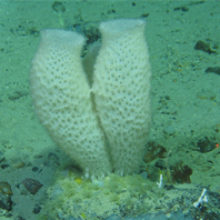
With the impending threat of antimicrobial resistance, now a widely-recognised phenomenon, researchers have begun to look to the deep in search of solutions to one of the greatest threats posed to human health. Boosted by public health initiatives, government endorsement and a concerted effort on the part of researchers worldwide, we are now beginning to work towards potential alternatives to the scenario outlined by Lord O’Neill in 2016 in the Review on Antimicrobial Resistance. But have we begun to turn the tide?
Antimicrobial discovery, as part of the much-needed and multi-faceted approach to tackling antimicrobial resistance (AMR), has necessitated that the search for novel compounds be widened to new and unexplored environments. Sponges have emerged in recent decades as the most prolific source of novel biological compounds from the marine environment. Over the last 45 years, sponges have become the most widely sampled marine phyla in the hunt for novel bioactive compounds. Initially, antimicrobial activity in sponge extracts was believed to be derived from the sponge itself, but the rediscovery of compounds across distinct sponge species, as well as the similarity of the compounds to those observed in terrestrial micro-organisms has confirmed that many sponge antimicrobials are in fact of microbial origin. For this reason, focus has shifted towards investigation of the microbial constituents of the sponge microbiota. The use of metagenomics to characterise the microbial inhabitants of specific species, alongside efforts to culture these sponge-associated microbes, is providing sponge researchers with an ever-growing bank of promising drug leads.
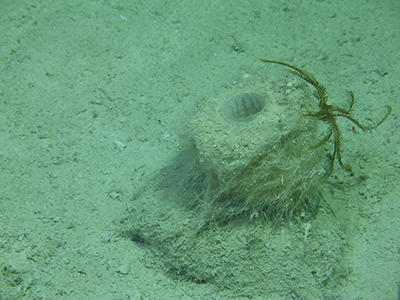
Sea sponges and their microenvironment
So what is it about sponges that make them and their resident microbes such an ideal environment for the production of such exciting compounds?
Our story starts a mere 600 million years ago. The icy desolation of a frozen earth is now a distant memory, multicellular life has transferred from MPhil to PhD and the first ‘complex’, invertebrate organisms are beginning to emerge. Enter the Porifera (sponges). Fast forward 600 million years and you arrive at the existence of an ancient metazoan organism with a unique, complex microbiota and a convergent evolution to be proud of. Sponges can be categorised as either high or low microbial abundance species. With a microbial abundance of 108–10 cells per gram of sponge tissue for ‘high microbial abundance’ sponges, their complexity exceeds that of the surrounding environment. This, combined with the knowledge that the sponge microbiota is known to play an important role in a range of ecological functions in the marine environment, makes it easier to imagine how the dynamic microenvironment of the sponge holobiont becomes such a reservoir for new and interesting antimicrobials.
The characterisation of the global sponge microbiome has identified a generally conserved or ‘core’ microbiota across sponge species, albeit with a high degree of interspecies variation. Proteobacteria, predominantly the Gammaproteobacteria, dominate the core microbiota, accompanied by members of the Cyanobacteria, Acidobacteria and Actinobacteria. A look at the major producers of antimicrobial compounds thus far from the sponge holobiont reveals that the Actinobacteria, specifically Streptomyces species, represent the most prolific producers of antimicrobial agents (~27%), followed by Pseudovibrio (~18%).
Even with the conservation of the core sponge microbiota, there is a high degree of variability between sponge species, particularly in the non-core, or lower-abundance bacterial species. It has been demonstrated that the sponge–host identity is the most important factor in determining microbial composition, suggesting that there is still far more to be discovered by looking at under-studied species.
Exploring the deep
It is only with relatively recent advances in sampling technology, the use of remotely operated vehicles (ROVs) and submersible vehicles, that the recovery of deeper water samples in good condition and from rocky seabeds, has been made possible. Previous to this, the only way to sample deep-sea animals was using trawls and dredges which damaged specimens and restricted use to softer seabeds where nets would not be damaged during sampling. Even so, much of our study has been of those animals found shallower than 1,000 metres, where now we are beginning to look deeper than this. Being able to sample these new environments provides access to more diverse sponges and brings with it the promise of a wealth of novel strains and compounds.
The use of ROVs for deep-sea sample collection is allowing our research team at the University of Plymouth to conduct the first in-depth investigations of a number of previously unstudied glass sponges (Hexactinellida), revealing information about their resident microbes and biotechnological potential. Much of the work previously describing sponge microbiota and novel antimicrobial discovery has been focused on sponges obtained from shallow waters. In addition, the Demosponge class of sponge has traditionally taken centre-stage in the hunt for novel bioactives. Occurring almost exclusively below 200 metres depth, the glass sponges represent an extremely under-appreciated organism in the ongoing search for bioactive molecules, particularly when considered in light of the knowledge that bacterial diversity in marine environments is known to increase with depth.
Potential novel bioactive compounds
It is suggested that with novelty of sample comes novelty of associated biologics. This assumption, explored with the use of both culture-dependent and -independent methods, is reinvigorating the quest for compounds in light of the ‘great plate anomaly’ (see box*), and in the process unravelling the hidden relationship between the hexactinellid sponge microbiota and its propensity for bioactivity.
With regards to the role of sponges specifically in the context of tackling AMR, it is interesting to note that, as yet, none of the compounds elicited by sponges or their microbiota have been translated into clinically approved antimicrobial drugs. Two compounds that have been marketed are Ara-C, with anti-cancer activity, and the anti-viral agent Ara-A. The scale-up of bioactive production, particularly where agents are sponge-derived, is hindered by a lack of biological material, yet theoretically this is more manageable where bacteria are the source.
This apparent disparity between the high number of discovered compounds and the number of approved therapies perhaps speaks of a wider problem inherent in the strategies currently employed in bringing drug candidates from bench to bedside, or in this case from the seabed to the bench. With large pharmaceutical companies reluctant to invest in antimicrobial development due to the low returns on investment, time-scales involved and the inevitable threat of resistance; this brings with it additional challenges in progressing potential leads through the pre-clinical pipeline.
Minimising the threat of AMR will undoubtedly require a multi-faceted approach, a key part of which will be provision of new classes of antibiotic. It is clear that (deep) sea sponges and their microbiota represent an extremely rich and still underexplored environment, but despite their bioactive productivity, there is still much to be discovered about these fascinating organisms. Their standing in the field of novel antimicrobial discovery is yet to be fully revealed.
Further reading
Blunt J, Copp B, Keyzers R, Munro M, Prinsep M. Marine natural products. Nat Prod Rep 2017;34:235–294.
Thomas T, Moitinho-Silva L, Lurgi M, Björk J, Easson C et al. Diversity, structure and convergent evolution of the global sponge microbiome. Nat Commun 2016;7:11870.
*The great plate anomalyWhere the number of micro-organisms identified using non-culture based methods, like microscopy or molecular analyses, far exceeds the numbers that can be counted growing on culture plates. |
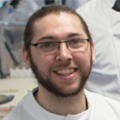
Matthew Koch
University of Plymouth, School of Biomedical and Healthcare Sciences, Derriford Research Facility, 14 Research Way, Plymouth Science Park, Plymouth PL6 8BU
Matthew Koch is a Society for Applied Microbiology-sponsored PhD student in Mat Upton’s lab at the University of Plymouth, where he completed his undergraduate degree in Biomedical Sciences in 2017. His work is focused on antimicrobial discovery from deep-sea sponges and their associated microbiota.
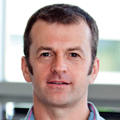
Mat Upton
University of Plymouth, School of Biomedical and Healthcare Sciences, Derriford Research Facility, 14 Research Way, Plymouth Science Park, Plymouth PL6 8BU
[email protected]
Twitter: @mat_upton
Mat Upton is Professor of Medical Microbiology at the University of Plymouth. He joined the Society in 1991. Mat runs a programme of novel drug discovery and span Amprologix out of the university in 2018 to further develop lead antimicrobial candidate epidermicin.
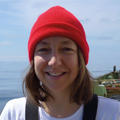
Kerry Howell
University of Plymouth, School of Biomedical and Healthcare Sciences, Derriford Research Facility, 14 Research Way, Plymouth Science Park, Plymouth PL6 8BU
[email protected]
Twitter: @DeepSeaEcol
Kerry Howell is Associate Professor of Marine Ecology at the University of Plymouth. Her research is focused on the deep-sea environment. Specifically, understanding the diversity and distribution of deep-sea species and habitats, to support more effective conservation and management of this vast ecosystem.
What does a typical day (or week) involve for you?
Matthew: A typical week for me consists mainly of lab work, working with different sponge isolates and characterising the compounds they produce. This currently involves working with a lot of different media, taking the bacteria through fermentation steps as well as chromatography. Also involved in a week are analysing results, setting time aside to read papers and drinking my fair share of coffee.
What inspired you to become a microbiologist?
Matthew: The idea that somewhere out there in the global ecosystem exist the treatments for current (and future) health problems. I also liked the idea that there were these tiny lifeforms hidden from view that were so complex and that did things I didn’t understand (and still don’t!).
Image 1: Euplectella sp. sponge prior to sampling (~1,200 metres). Kerry Howell courtesy Eurofleets2–funded DeepMap project – University of Plymouth, NUI Galway, Centre for Environment Fisheries and Aquaculture Science (Cefas), Marine Institute.
Image 2: Pheronema carpenteri in situ on the sea-floor (~1,200 metres). Kerry Howell courtesy Eurofleets2–funded DeepMap project – University of Plymouth, NUI Galway, Centre for Environment Fisheries and Aquaculture Science (Cefas), Marine Institute.
